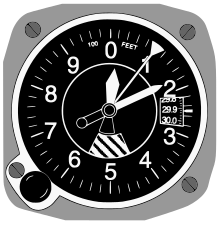
Back Error de pilotatge Catalan Error del piloto Spanish Erreur de pilotage French Kelalaian pilot ID Errore del pilota Italian パイロットエラー Japanese 조종사 과실 Korean Keralatan juruterbang Malay Pilotaj hatası Turkish





Pilot error generally refers to an accident in which an action or decision made by the pilot was the cause or a contributing factor that led to the accident, but also includes the pilot's failure to make a correct decision or take proper action.[2] Errors are intentional actions that fail to achieve their intended outcomes.[3] The Chicago Convention defines the term "accident" as "an occurrence associated with the operation of an aircraft [...] in which [...] a person is fatally or seriously injured [...] except when the injuries are [...] inflicted by other persons."[4] Hence the definition of "pilot error" does not include deliberate crashing (and such crashes are not classified as accidents).
The causes of pilot error include psychological and physiological human limitations. Various forms of threat and error management have been implemented into pilot training programs to teach crew members how to deal with impending situations that arise throughout the course of a flight.[5]
Accounting for the way human factors influence the actions of pilots is now considered standard practice by accident investigators when examining the chain of events that led to an accident.[5][6]
- ^ "TENERIFE DISASTER – 27 MARCH 1977: The Utility of the Swiss Cheese Model & other Accident Causation Frameworks". Go Flight Medicine. Retrieved 13 October 2014.
- ^ Pilot’s Handbook of Aeronautical Knowledge (2016). U.S. Department of Transportation. Federal Aviation Administration, Flight Standards Service pdf.
- ^ Error Management (OGHFA BN). Operator's Guide to Human Factors in Aviation. Skybrary
- ^ How exactly should I understand the term "accidental hull loss"?. Aviation stack overflow
- ^ a b "Risk management handbook" (PDF) (Change 1 ed.). Federal Aviation Administration. January 2016. Chapter 2. Human behavior. Retrieved 16 November 2018.
- ^ Cite error: The named reference
AAIwas invoked but never defined (see the help page).
© MMXXIII Rich X Search. We shall prevail. All rights reserved. Rich X Search
